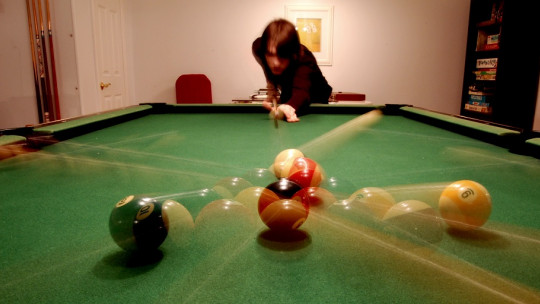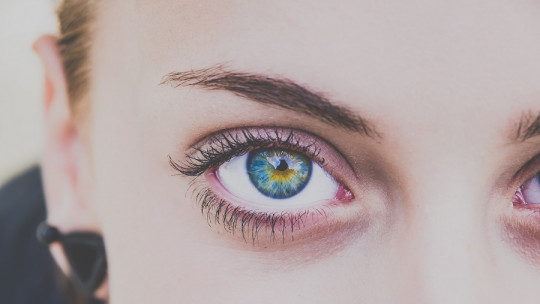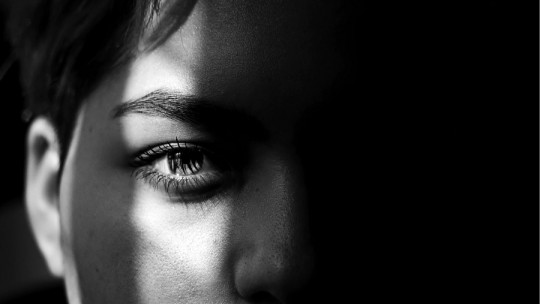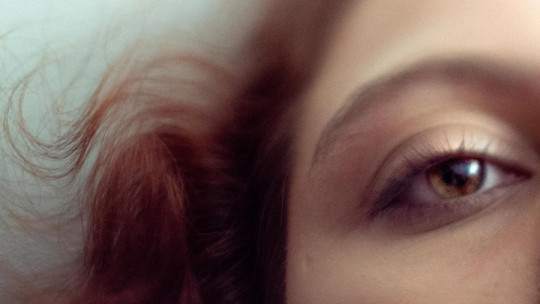When we observe the environment, our eyes make a large number of movements to capture each and every one of the details and movements that make it up. Our brain then composes a harmonious image of everything around us, including moving objects and people.
Our sight works like a video camera that produces thousands of frames of what surrounds us, while our brain projects the “movie” in our mind. However, what happens when this function is altered? In these cases akinetopsia appears a disorder in which the person has difficulty perceiving movement.
What is akinetopsia?
akinetopsia, also known under the terms akinetopsia or movement blindness, consists of a disorder of a neurological nature that affects the sense of sight. Specifically, akinetopsia causes, in those who suffer from it, an inability to perceive movement through sight.
This condition, described for the first time around 1991 by the British-born neurologist Semir Zeki, makes the affected person unable to perceive movement The patient cannot see the movement of his own body, as well as that of other people or objects.
However, akinetopsia is not an “all or nothing” condition. This condition can have varying degrees of severity. From the mildest, in which the person perceives the movement as if it were a sequence of images or a movie in which the frames pass in slow motion; to the most severe, in which the patient experiences a total inability to perceive movement.
In this disorder, the person can only perceive other subjects, objects or themselves in a specific place and suddenly in another. Or at most, she perceives a kind of blurred trail behind the moving object.
Although the rest of the sensory functions and abilities remain intact, People with akinetopsia also have their visual-motor skills disturbed Since they do not perceive their own movements well, tasks such as walking and moving, or reaching for objects can be really complicated.
Types of akinetopsia and symptoms
As mentioned above, akinetopsia can occur in different degrees of condition. These degrees constitute the different typologies of this disorder, which vary both in the severity of the symptoms and in the level of blindness it causes in the person.
There are two different types of akinetopsia They are the following.
1. Fine or discrete acinetopsia
This first type of akinetopsia, known as fine or discrete, is the one that presents milder symptoms and, therefore, less disabling for the person. Although, equally, people who suffer from it report experiencing enormous discomfort.
In light akinetopsia, the person perceives movement as if viewing a reel in which the frames pass at a much slower speed Another example would be a multiple exposure photograph, in which the person can perceive the trail of movement of both objects and people, including the patient themselves.
At the moment, it is not known what abnormality in the functioning of the body causes this disorder. However, experts point to the idea that abnormal functioning in the mechanisms that allow us to maintain visual stability in eye movements can cause this type of akinetopsia.
2. Macroscopic acinetopsia
Also known as gross akinetopsia, This type of motion blindness is extremely unusual and very low incidence among the population.
In contrast to fine akinetopsia, in macroscopic one the person is completely unable to perceive the movement in its entirety. This means that the person can only see a static world in which for an instant the object or person is in one place and then in a different place.
The few people who suffer from it, They tend to suffer from numerous problems in carrying out their daily tasks normally Daily activities such as maintaining a conversation are highly complicated since the patient is unable to perceive changes in the movement of facial expressions. Likewise, daily routines, such as crossing the street, become very dangerous; Since it is not possible to perceive the movement of the cars.
In order to compensate for these difficulties, people with akinetopsia train their hearing. In this way, through the sense of listening they can, for example, calculate the distance of objects that are in motion.
What are the causes?
The origin of akinetopsia is an abnormal functioning or interruption of activity in the area of the cortex that is located in the central area of the temporal lobe Structural alterations in this area of the brain can transform the processes of understanding sensory information. In the case of this strange disorder, it is the processes that process visual information that are compromised.
There are several reasons why this brain region can be affected. From brain injuries, to the consumption of certain antidepressants or hallucinogens, or some diseases such as Alzheimer’s disease.
1. Brain injuries
One of the causes of this disorder may be a lesion caused in the posterior area of the visual cortex although it is really complicated, since an injury of this type is likely to generate many more sensory deficits.
2. Antidepressant medication
The administration of very high doses of some antidepressants can cause visual problems such as akinetopsia. However, this tends to disappear when the treatment is eliminated or the dose is readjusted.
3. Hallucinogenic substances
Habitual or recurrent consumption of certain hallucinogenic substances can cause sensory alterations of all kinds including the less severe version of akinetopsia, fine akinetopsia.
4. Migraine aura
The aura is a visual phenomenon that accompanies the headaches of migraines. This tends to appear moments before the onset of pain and is manifested by visual symptoms such as spots in space, flashes or fine akinetopsia.
5. Alzheimer’s disease
Although they do not appear very frequently, akinetopsia, present in different degrees, can accompany alterations in memory in Alzheimer’s patients.
Is there a treatment?
At the moment, there are no pre-established guidelines for the treatment of akinetopsia. In cases in which this is caused by the administration of psychotropic drugs, stopping their consumption should eliminate the symptoms of this disorder.
Nevertheless, brain surgery, although risky, is an option to try to eliminate akinetopsia in those cases in which a brain injury underlies.
By citing this article, you acknowledge the original source and allow readers to access the full content.
PsychologyFor. (2024). Akinetopsia (motion Blindness): Types, Symptoms, Causes and Treatment. https://psychologyfor.com/akinetopsia-motion-blindness-types-symptoms-causes-and-treatment/










